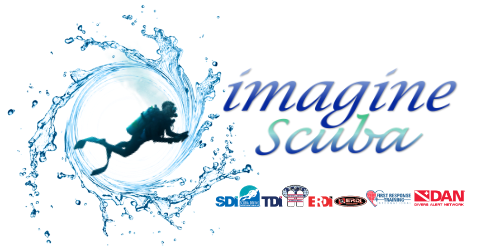We hear the question all the time from new divers and in some cases seasoned divers as well – How do I get more time out of my cylinder? The usual answers include “relax” or “it’ll come with time and experience” or “count through your breaths,” just to throw a few out there. However, we rarely take the extra time to explain Diaphragmatic Breathing.
Diaphragmatic what???
Diaphragmatic breathing is sometimes referred to as Abdominal or Belly Breathing. It’s the scientific solution for effective oxygen exchange in the body, a reduced heart rate and relaxation, whether in or out of the water. All of us actually did this from birth and in our younger years, but as we got older, we started lung breathing and getting used to shorter, less effective breaths. Freedivers have been exercising breathing management techniques for years to obtain maximum breath holds and it’s time the scuba community embraces the knowledge and shares in the benefits.
*Hint, hint* The first and most readily noticed benefit – better buoyancy control!
Rather than directing everyone to a myriad of “how-to” websites and videos, we’ll cut through all that and provide the simplest abbreviated instructions you need to focus on. This is all about the diaphragm, the primary muscle below the lungs and heart that we need to retrain.
Most instructions will have these things in common:
- Slow, steady, and deep inhale through the nose with a focus on watching the stomach rise, not the chest (this is very important.) Many websites recommend placing one hand on the stomach and another on the chest to make watching the rise and fall of each breath easier.
- Some will recommend a slight pause at the end of an inhale, some will recommend holding that breath for a count of four and some will recommend a continued breath through the exhale. What we DON’T want to do is get divers, especially new divers, into thinking that “skip breathing” is correct in any way.
- The exhale should be deliberate, and by that I mean tensing the stomach muscles with an equally slow and steady rhythm to get as much of the exhausted air out of your body’s dead air spaces as possible.
On the surface, you’ll be breathing in through your nose and out of your mouth through pursed lips. It will take practice – you’re trying to retrain your body to do something it hasn’t done naturally since birth. Some find practicing easier while lying down, while others find it easier to do in a seated position. The bottom line is you have to practice five to ten minutes at a time, three to four times a day. With time this can again become second nature and the health benefits extend beyond the underwater world.
How do we apply this to scuba?
How and when do we best apply diaphragmatic breathing to scuba . . . not at the last second before you hit the water, that’s for sure. Ideally, after you get your dive briefing and you’ve done your buddy checks, the time is yours. Save those last few minutes to get into a good breathing rhythm, listen to the waves and water, and relax. Combine your breathing time with some visualization and you have a common focus that will not only lower your heart rate but give you a mental picture of what your dive should look like.
Will you notice a dramatic difference immediately? Most likely not. Will you notice an appreciable difference over time? If you practice, absolutely. This is where we break off and start a class on SAC rates, so I’ll digress and welcome our brothers and sisters from PFI to chime in and leave you with the greatest words in our sport – Dive, Dive, Dive.
By Roy Cabalo

